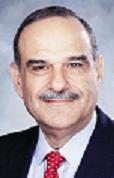Coming Back, Part 2

Continuing from a previous article:
Last year, tourism was at 70 percent of the pre-Katrina level that generated $5 billion a year. But the city began this year with four major events -- college football's Sugar Bowl and national championship game, Mardi Gras, and the NBA All-Star Game Weekend -- plus major conventions. The momentum continued with the French Quarter and Jazz festivals, and more than 16 festivals are scheduled through the end of the year, including Tales of the Cocktail mixing it up this week and the new Prospect 1 -- "the largest biennial of international contemporary art ever organized in the United States," planners say -- scheduled to start Nov. 1.
There's also a new attraction, the Audubon Insectarium, which opened last month on Canal Street, near the Audubon Aquarium of the Americas, an Imax theater, and the Audubon Zoo.
Still, some would-be tourists are staying away out of a sense of respect for everything the city's been through, says Sandra Shilstone, head of the New Orleans Tourism Marketing Corp. Those people should remember the city's unofficial motto, the Jazz Festival's Quint Davis says: "We dance when we die."
This year's official slogan is "Come out and play," and that's what people were doing the weekend I was there. Bourbon Street was a little sleepy on Thursday and Friday afternoons, but it sprang to life on Friday and Saturday nights. A continuous stream of visitors of all ages strolled along the pedestrian-only street, many toting plastic "go cups," since open containers of alcohol are permitted.
High school students in gowns and tuxedos dined at some of the fancier restaurants, bachelor and bachelorette parties club-hopped, and families rode horse-drawn carriages through the Quarter and along Jackson Square.
Since the disaster, there have been some surprises in the city's regrowth, Shilstone says.
"There's been a cultural renaissance. Neighborhoods putting on arts festivals and cultural events," she says. "People lost art and are buying again."
As she shows us the sections of the city hit hardest by the flooding -- West End, Lakeview, Gentilly, New Orleans East, St. Bernard, and the Ninth Ward -- Stauder stresses that she doesn't care why people come, just that they come.
There's also a new attraction, the Audubon Insectarium, which opened last month on Canal Street, near the Audubon Aquarium of the Americas, an Imax theater, and the Audubon Zoo.
Still, some would-be tourists are staying away out of a sense of respect for everything the city's been through, says Sandra Shilstone, head of the New Orleans Tourism Marketing Corp. Those people should remember the city's unofficial motto, the Jazz Festival's Quint Davis says: "We dance when we die."
This year's official slogan is "Come out and play," and that's what people were doing the weekend I was there. Bourbon Street was a little sleepy on Thursday and Friday afternoons, but it sprang to life on Friday and Saturday nights. A continuous stream of visitors of all ages strolled along the pedestrian-only street, many toting plastic "go cups," since open containers of alcohol are permitted.
High school students in gowns and tuxedos dined at some of the fancier restaurants, bachelor and bachelorette parties club-hopped, and families rode horse-drawn carriages through the Quarter and along Jackson Square.
Since the disaster, there have been some surprises in the city's regrowth, Shilstone says.
"There's been a cultural renaissance. Neighborhoods putting on arts festivals and cultural events," she says. "People lost art and are buying again."
As she shows us the sections of the city hit hardest by the flooding -- West End, Lakeview, Gentilly, New Orleans East, St. Bernard, and the Ninth Ward -- Stauder stresses that she doesn't care why people come, just that they come.










